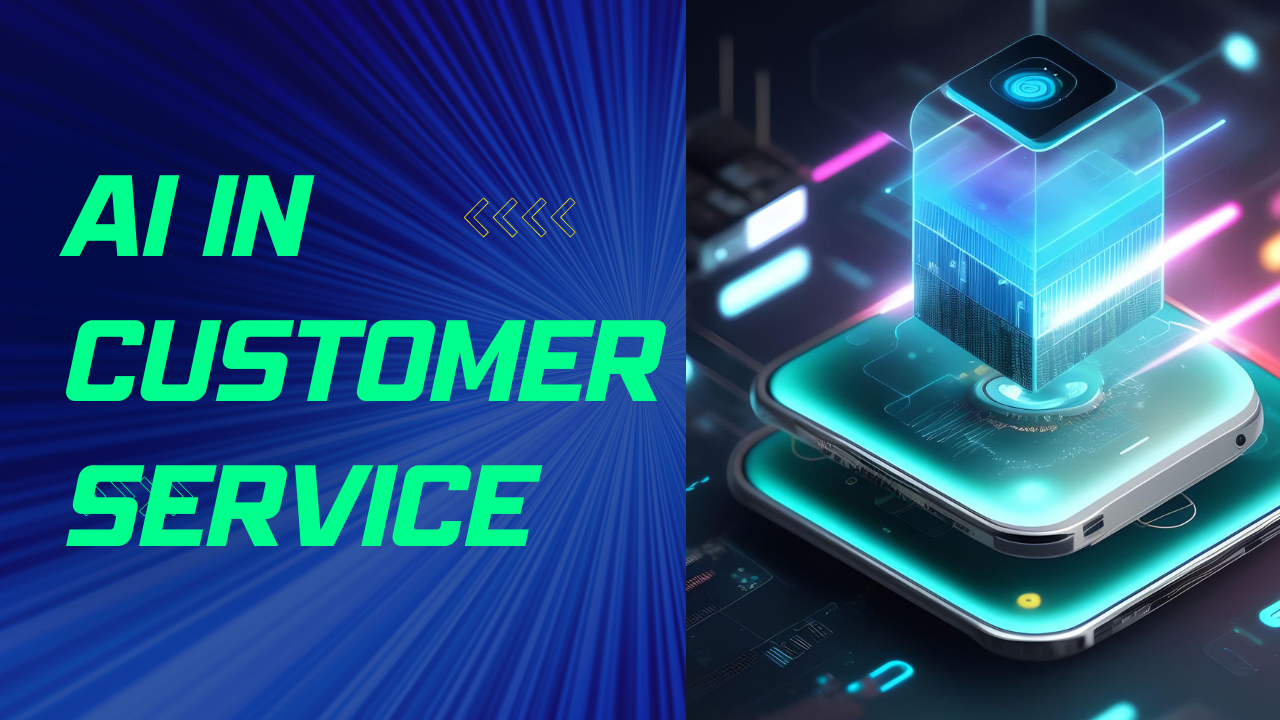AI in Customer Service

AI in Customer Service: Explore how chatbots and virtual assistants are changing the way businesses interact with customers.
Table of Contents
- Introduction
- The Rise of AI in Customer Service
- Benefits of AI-Powered Customer Service
- Implementing Chatbots and Virtual Assistants
- Enhancing Customer Support Efficiency
- Personalizing Customer Interactions
- 24/7 Availability and Quick Responses
- AI in E-commerce Customer Service
- Case Studies: AI Success Stories
- Challenges and Considerations
- Ensuring Data Privacy and Security
- The Future of AI in Customer Service
- Conclusion
- FAQs
1. Introduction
In today’s digital age, customer service has evolved significantly, thanks to the integration of Artificial Intelligence (AI). Chatbots and virtual assistants have become invaluable tools for businesses aiming to streamline and enhance their customer interactions. This article explores the transformative impact of AI in customer service, from its rise to the numerous benefits it offers, implementation strategies, and case studies highlighting success stories. We will also discuss the challenges and considerations associated with AI in customer service and glimpse into the promising future of this technology
2. The Rise of AI in Customer Service
AI has revolutionized the customer service landscape, offering innovative solutions that cater to modern consumer expectations. Gone are the days of long hold times and repetitive scripted responses. AI-driven chatbots and virtual assistants have enabled businesses to engage with their customers more efficiently and effectively
3. Benefits of AI-Powered Customer Service
3.1. Enhanced Efficiency
AI-driven customer service systems can handle a high volume of inquiries simultaneously, reducing wait times and improving response times.
3.2. Cost Savings
Automated customer service solutions significantly cut operational costs by reducing the need for a large human support team.
3.3. Improved Customer Satisfaction
Quick and accurate responses provided by AI systems lead to higher customer satisfaction rates.
3.4. Data-Driven Insights
AI collects valuable customer data, helping businesses understand customer preferences and behaviors.
4. Implementing Chatbots and Virtual Assistants
Integrating chatbots and virtual assistants into your customer service strategy requires careful planning and execution. It involves selecting the right AI solutions, training them effectively, and seamlessly integrating them with existing systems.
5. Enhancing Customer Support Efficiency
AI-driven customer support systems can handle routine inquiries, allowing human agents to focus on complex and emotionally sensitive customer issues, thereby improving overall support efficiency.
6. Personalizing Customer Interactions
AI algorithms analyze customer data to provide personalized recommendations and responses, creating a more engaging and tailored experience for customers.
7. 24/7 Availability and Quick Responses
One of the key advantages of AI in customer service is its round-the-clock availability. Customers can receive assistance at any time, leading to quick issue resolution and improved customer satisfaction.
8. AI in E-commerce Customer Service
E-commerce businesses benefit greatly from AI-powered customer service, with chatbots assisting customers in product recommendations, order tracking, and resolving payment issues.
9. Case Studies: AI Success Stories
Explore real-world examples of businesses that have successfully implemented AI in their customer service operations, showcasing significant improvements in efficiency and customer satisfaction.
10. Challenges and Considerations
While AI in customer service offers numerous advantages, it also comes with challenges such as potential data breaches, technical glitches, and the need for continuous monitoring and improvement.
11. Ensuring Data Privacy and Security
Protecting customer data is paramount. This section discusses the importance of data privacy and security measures when implementing AI in customer service.

12. The Future of AI in Customer Service
As AI technology continues to advance, we delve into the future possibilities, including more sophisticated AI chatbots, enhanced natural language processing, and increased integration with other business systems.
13. Conclusion
In conclusion, AI has ushered in a new era of customer service, transforming how businesses interact with their customers. From increased efficiency to personalized interactions and 24/7 availability, the benefits are undeniable. However, businesses must also address challenges and prioritize data security to fully harness the potential of AI in customer service.
14. FAQs
Q1. How do AI-powered chatbots work in customer service? AI-powered chatbots use natural language processing to understand and respond to customer inquiries effectively.
Q2. Can AI replace human customer service agents entirely? While AI can handle routine tasks, human agents are still essential for complex and emotionally sensitive customer issues.
Q3. What industries benefit the most from AI in customer service? E-commerce, finance, and healthcare are among the industries that benefit significantly from AI-driven customer service.
Q4. Are there any privacy concerns with AI in customer service? Yes, data privacy is a concern, and businesses must implement robust security measures to protect customer information.
Q5. What does the future hold for AI in customer service? The future of AI in customer service looks promising, with advancements in AI technology and integration across various industries.
what is AI // क्या है ai //type of ai
Reinforcement learning- (RL)-What is RL in reinforcement?-introduction


